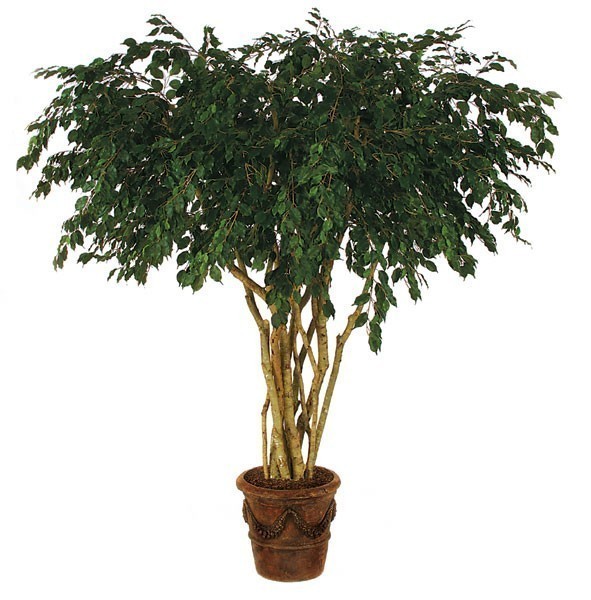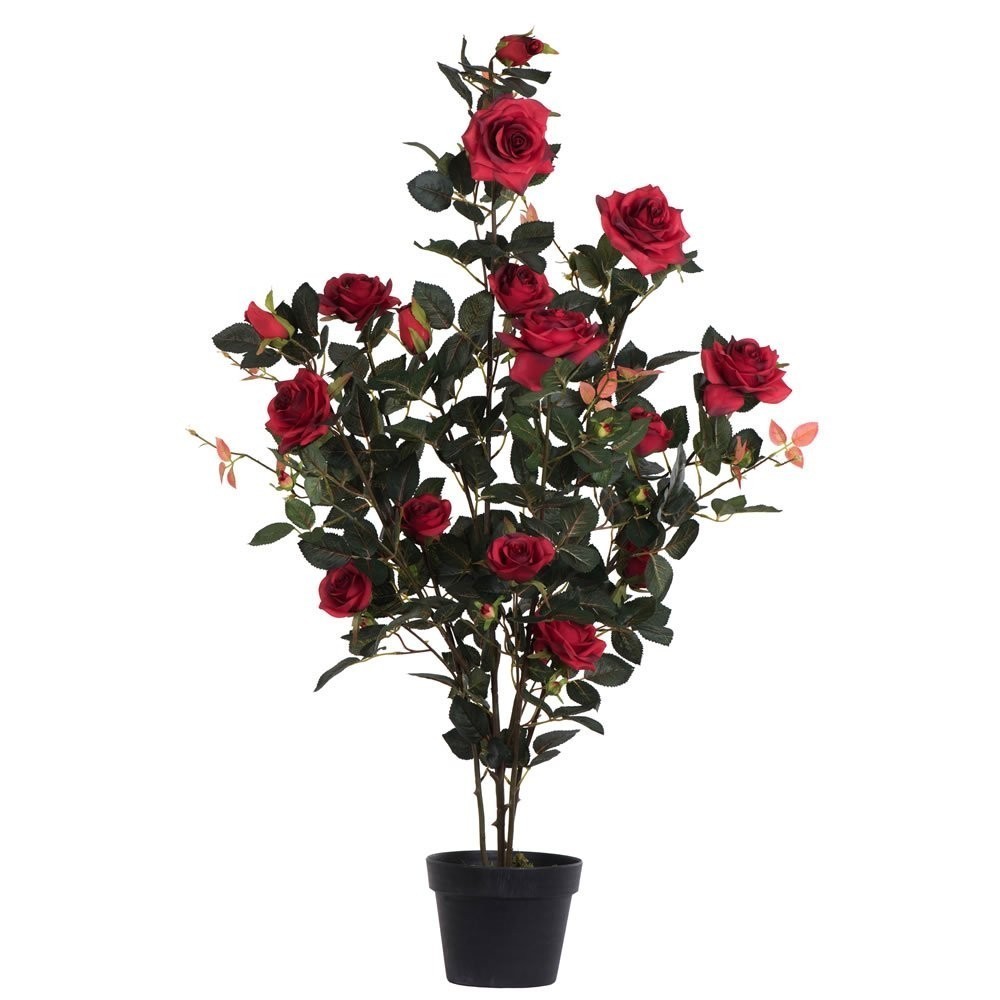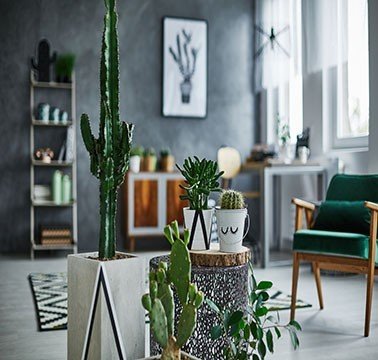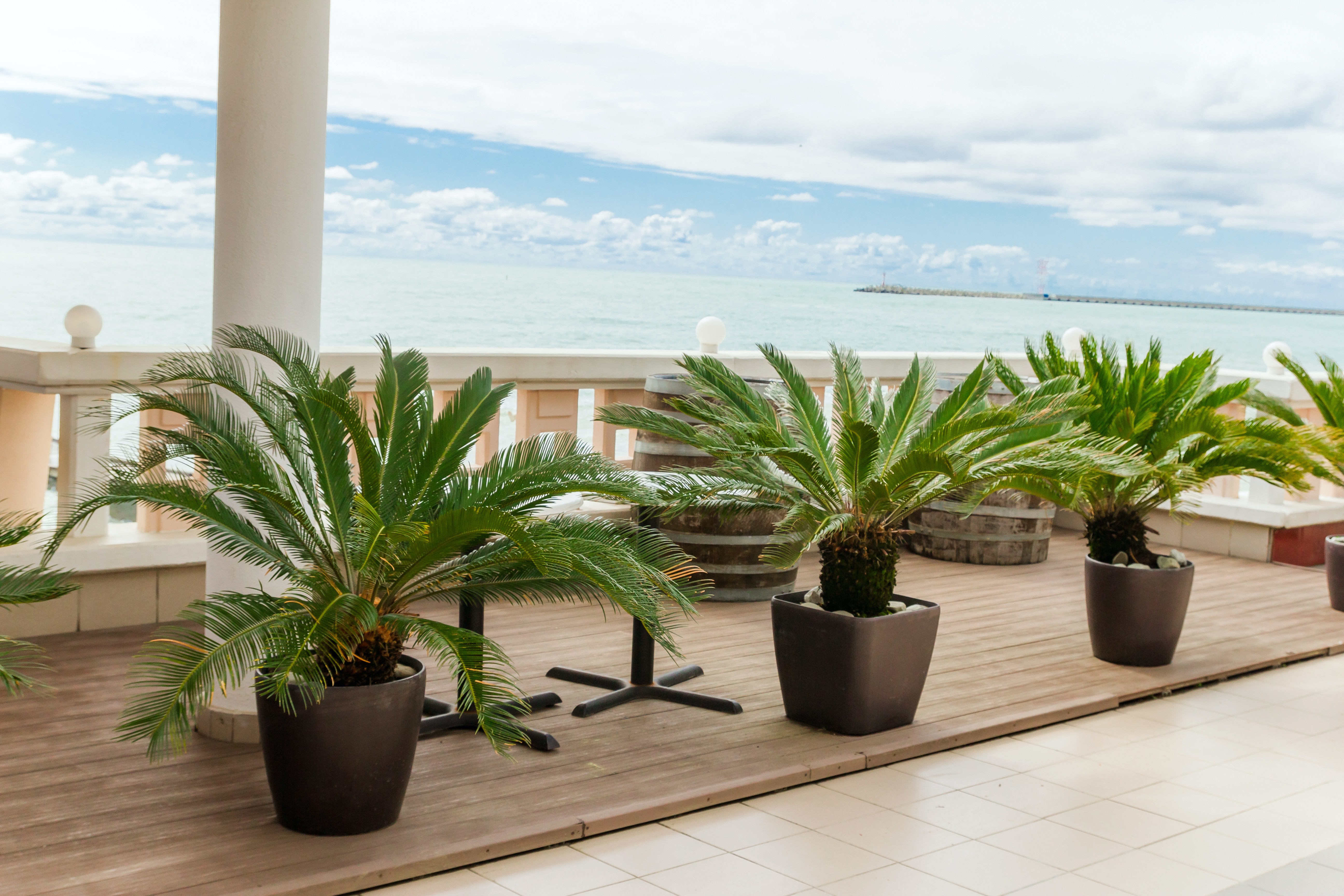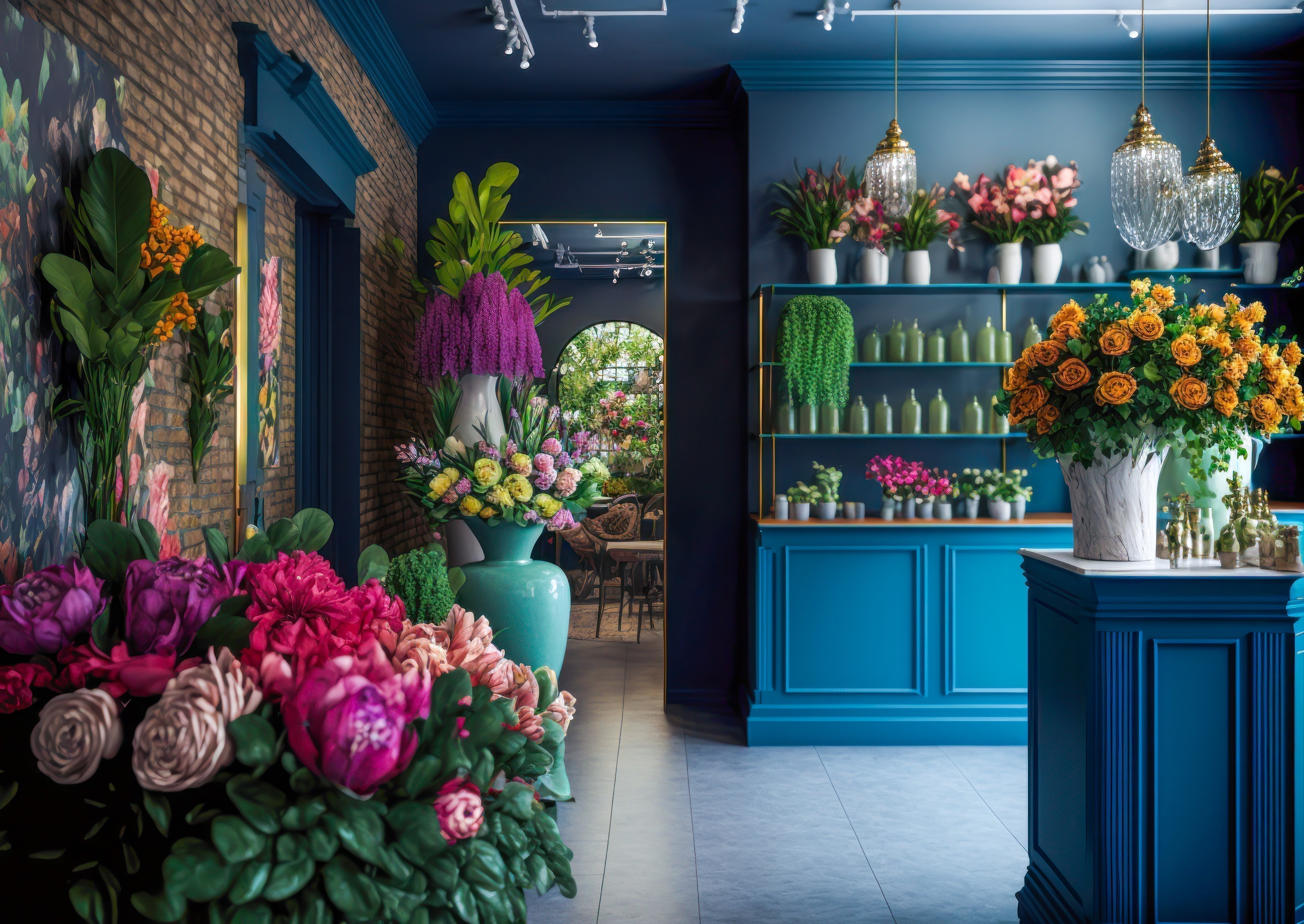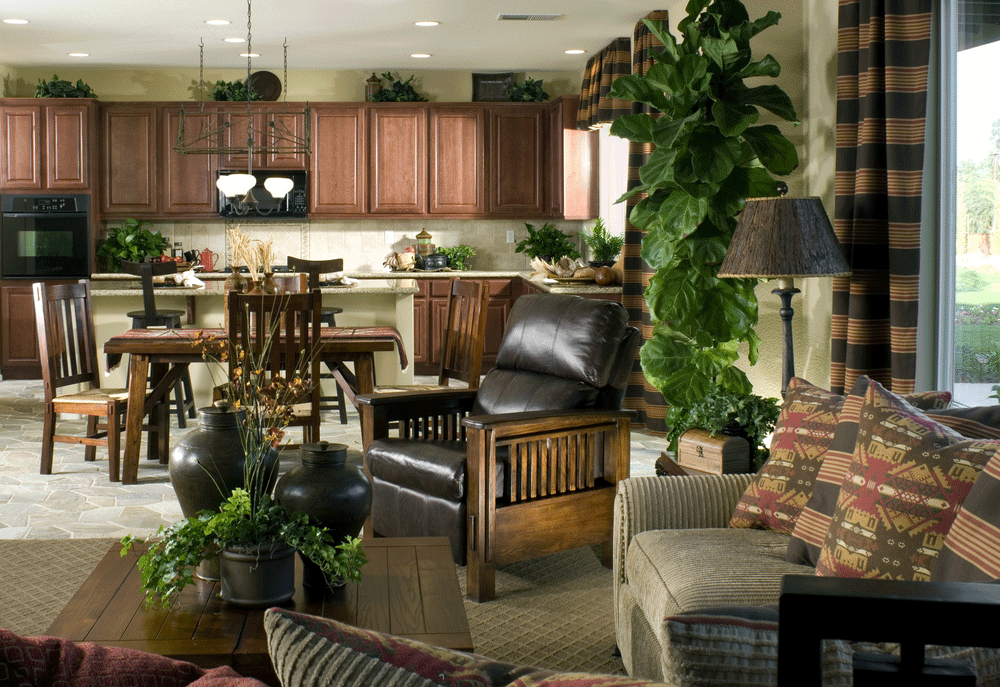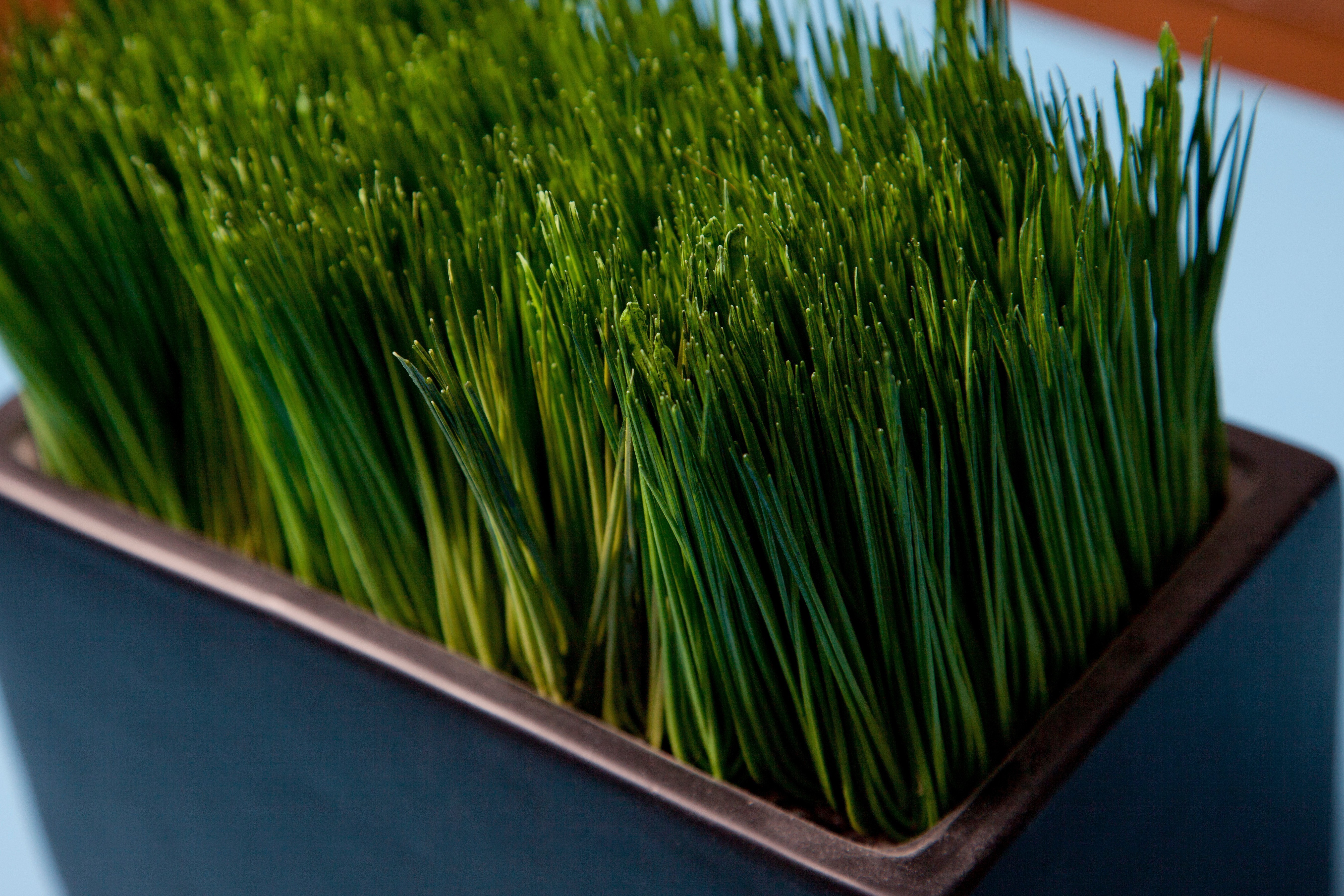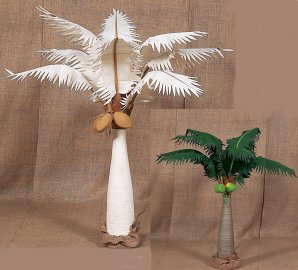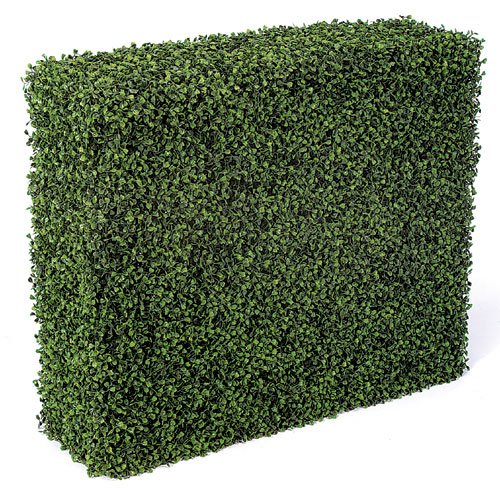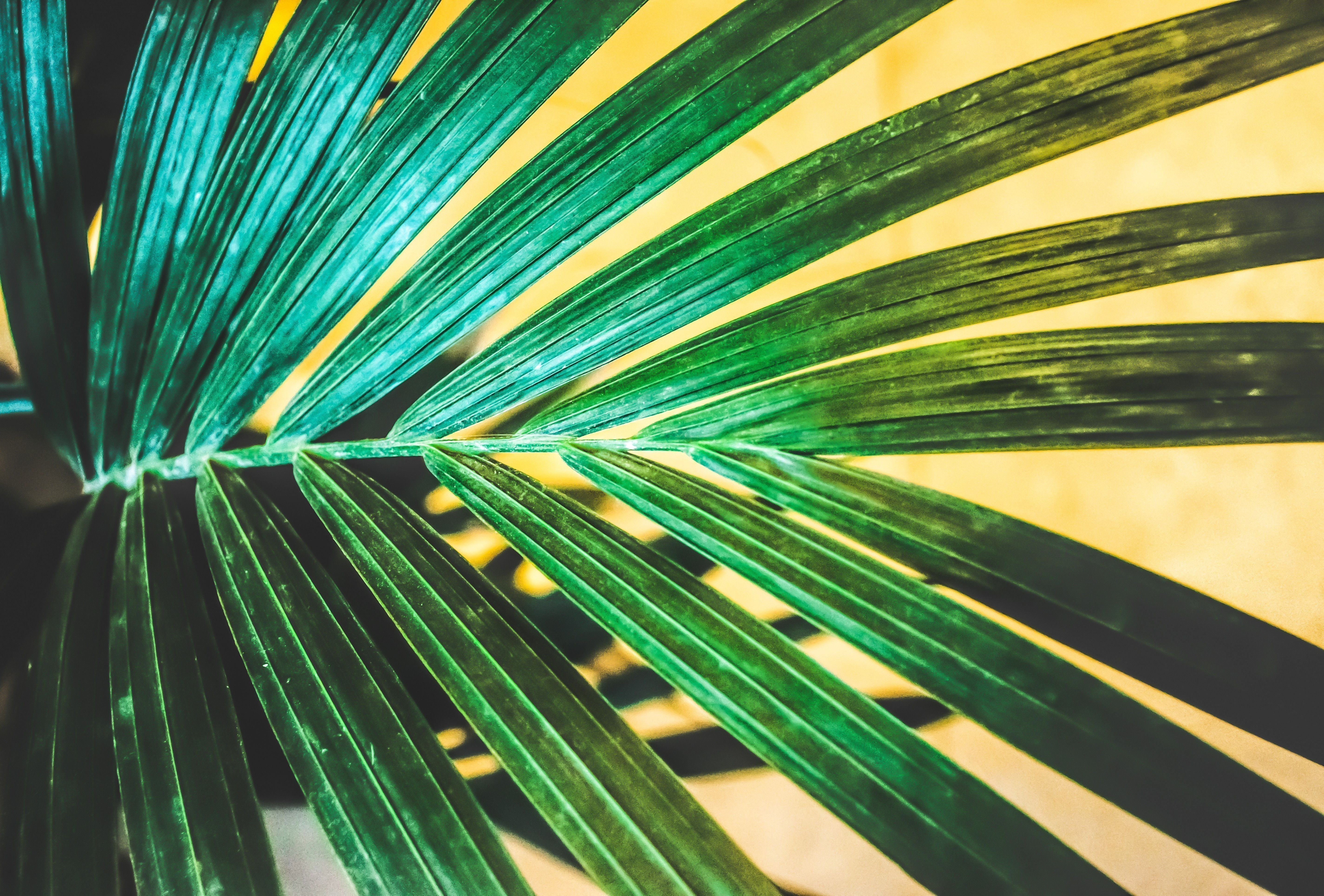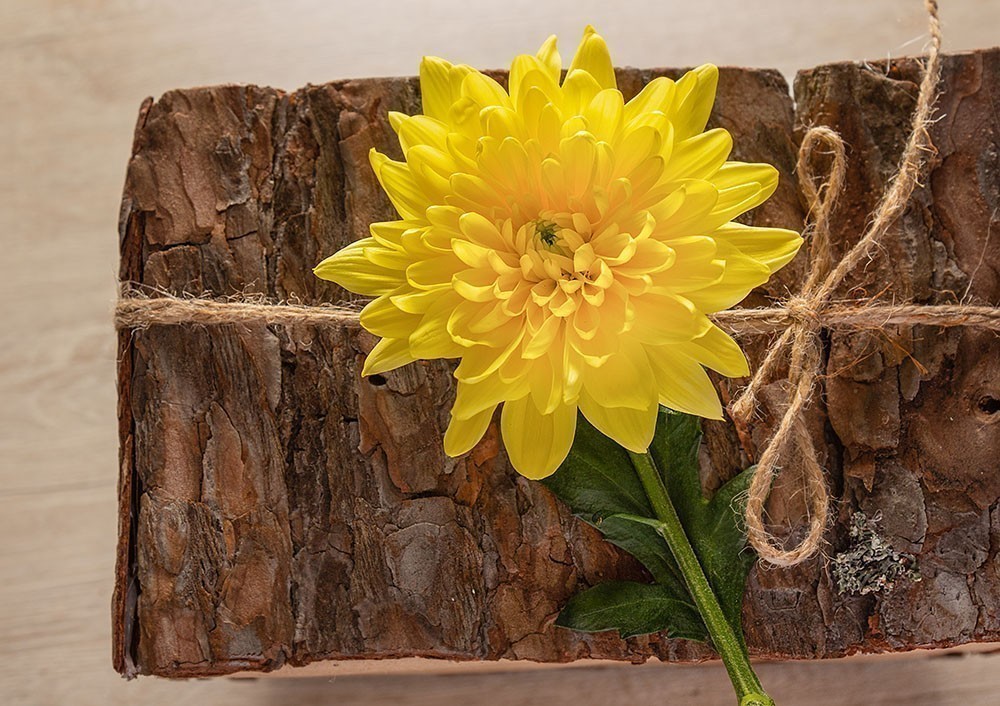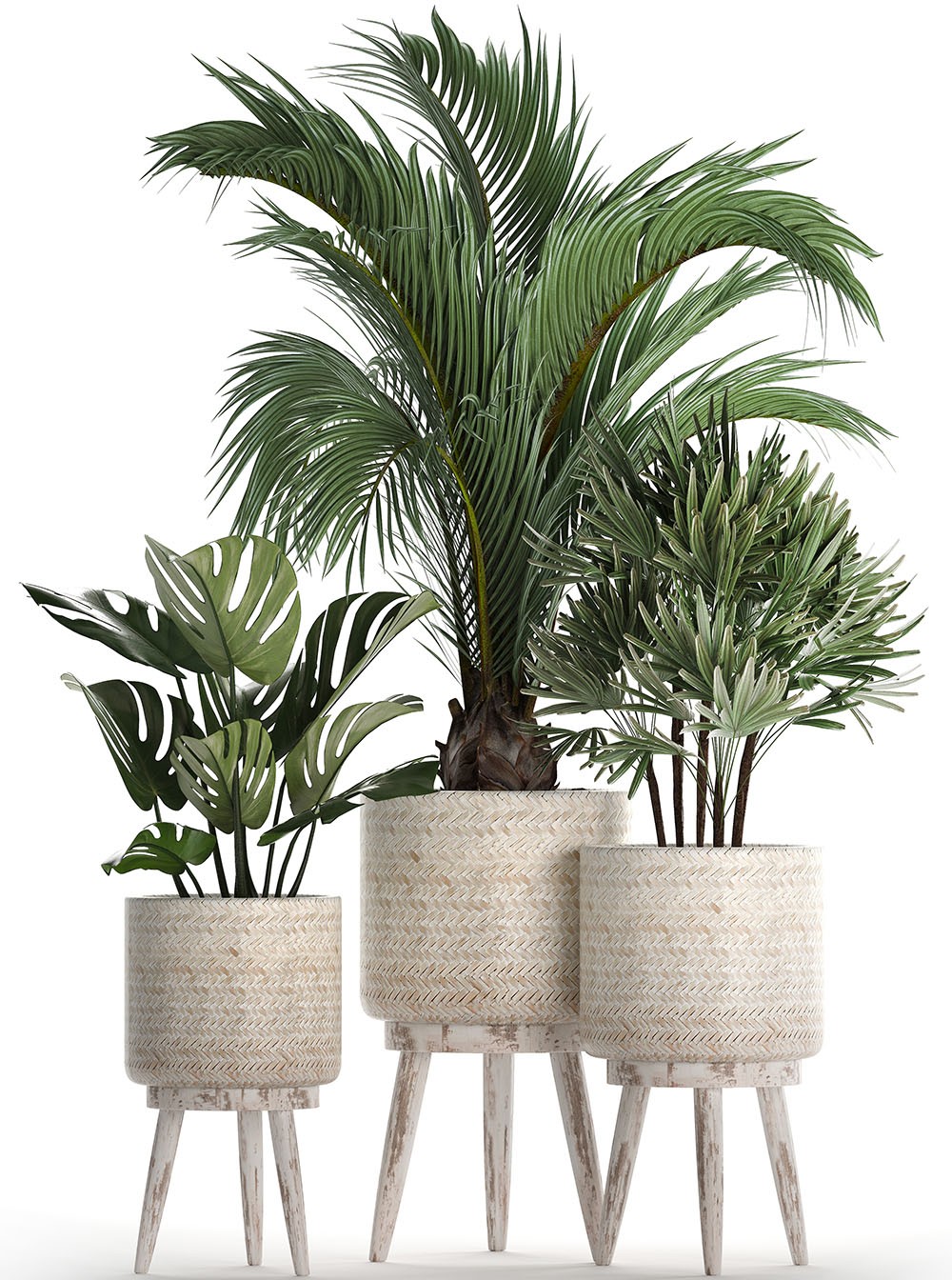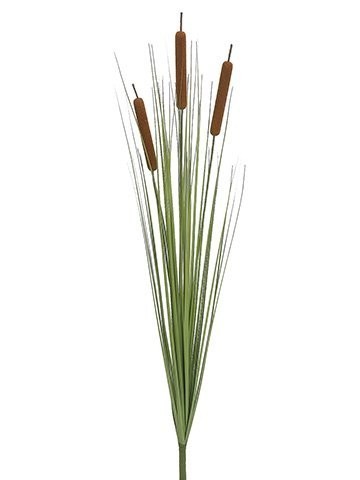-
Tropical Artificial Palm Trees > Plants>Thatch >Birds
- Pre-Lit Artificial Palm Trees
-
Interior Tropical Palm Artificial Trees
- Deco Artificial Areca Palms
- Lavish Faux Golden Cane Palms
- Tropical Artificial Paradise Palms
- Deco Faux Banana Palms
- Tropical Artificial Coconut Palms
- Deco Artificial Cycas Palms
- Artificial Roebellinii Palms
- Tropical Artificial Phoenix Palms
- Deco Artificial Fishtail Palms
- Deco Faux Lady Palms
- Zen Faux Bamboo Trees
- Flowing Artificial Fountain Palms
- Deco Faux Parlour Palms
- Tropical Artificial Travelers Palm
- Deco Faux Sago Palm Tree
- Tropical Artificial Date Palms
- New Faux Grass Palm Tree
- Colorful Flowering Artificial Tropical Palms
- Stylish Faux Kentia Palms
- Outdoor Tropical Artificial Palm Trees
- Preserved Palm Trees
- Canvas Palm Trees
- Tropical Artificial Plants
- Tropical Artificial Birds
- Tiki Bar & Thatch Umbrella
- Canvas Palms & Plants
- Faux Living Walls
- Fire Retardant Artificial Greenery
-
Outdoor Artificial Palm> Trees> Topiary>Plants
- Outdoor Artificial Decorative Trees
-
Outdoor Faux Bushes and Ferns
- Outdoor Fancy Fern Plants
- Durable Artificial Select Juniper plant
- All- weather Deco Lirope Plant
- Exterior Magnificent Mahonia Bushes
- Beautiful Faux Exterior Boxwood Plants
- Exterior Artificial Deco Rhododendron Plants
- Elegant Artificial Outdoor Flowering Plants
- Euro Artificial Exterior Cypress Trees
- Polyblend Artificial Outdoor Perfect Polycaise Plants
- Magnificent OutdoorArtificial Mountain Laurel Plants
- Grand Exterior Artificial Taxus Yew Plants
- Graceful Weather-Proof Podocarpus Plant
- Tropical Faux Palm Trees and Palm Bushes
- Outdoor Garlands, Branches and Vines
- Outdoor Artificial Flowering Plants and Vines
- Outdoor Artificial Tropical Plants
- Outdoor Artificial Hedges
- Outdoor Artificial Landscaping Grass
- Outdoor Faux Topiary
- Preserved and Artificial Moss
-
Artificial Cactus Succulents
- Faux Finger Cactus
- Faux Life Like Plastic Mexican Cactus
- Faux Life Like Plastic Small Cacti & Succulent
- Faux Life Like Plastic Saguaro Cactus
- Faux Plastic Prickly Pear Cactus
- Stylish Artificial Column Cactus
- Luminous Lighted Faux Cactus
- Natural Touch Life Like Cactus
- Artificial Desert Agave
- Succulent Wreaths
- Wall Floor Artificial Grass Mats>Grasses>Bark>Rock
-
Artificial Trees >Topiary> Bonsai
-
Exquisite Decor Artificial Topiaries
- Pvc Pine Topiaries with or without lights
- Life Like Artificial Cone & Ball Topiaries
- Faux Flowering Topiary
- Decorative Rosemary Topiary
- Exquisite Spiral Topiary
- Faux Ball Tree Topiaries
- Preserved Ball, Spiral, Cone Topiary
- Table Top Topiaries
- Artificial Juniper Topiaries
- Artificial Oxford Ivy Topiaries
- Artificial Pittsburgh Ivy Topiaries
- Artificial English Ivy Topiaries
- Artificial Cone Topiaries
- Artificial Boxwood Topiaries
- Artificial Elegant Exterior Topiaries
- Custom Made Letter Artificial Boxwood Topiaries
- Preserved Zen Bonsai
- Enchanting Ball Topiary Artificial Trees
- Captivating Artificial Bamboo Trees
- Designer Collection Artificial Trees
- Euro Collection Olive & Fig Artificial Trees
- Oriental Ming, Lace , Finger Aralia Artificial Trees
- Faux Ficus Trees
- Fall Artificial Trees In Multiple Color Choices
- Faux Flowering Trees
- Lavish Artificial Fruit Trees
- Fancy Ice Glitter & Lighted Artificial Trees
- Oriental Mini Japanese Maple Artificial Trees
- Everlasting Pine Artificial Trees
- Preserved Eucalyptus Trees
- Outdoor Artificial Trees
- Custom Giant Artificial Trees
-
Exquisite Decor Artificial Topiaries
- Fabulous Faux Flowering Collection
-
Faux Palm Fronds >Tree > Twig Branches
- Preserved Palm Fronds
- Holiday Decorative Branches
- Tropical Faux Palm Branches
- Outdoor All Weather Branches
- Oriental Artificial Bamboo Branches
- Faux Maple Branches
- Tuscan Faux Olive Branches
- Life Like Aralia Branches
- Faux Ficus Branches
- Artificial Oak Branches
- Curly Willow Selections
- Artificial Laurel Branches
- Faux Podocarpus Branches
- Artificial Birch Branches
- Faux Flowering Branches
- Artificial Pine Branches
- Faux Ginko Branches
- Artificial Cottonwood(Aspen) Branches
- Faux Large Leaf Banyon, Bo Ficus,Alder
- Artificial Sycamore Branches
- Vivid Mixed Variety Artificial Branch Collection
- Custom Made To Order Branches
-
Lush Faux Greenery and Decor
- Hanging Silk Plants
- Wreaths and Swags
- Silk Potted Arrangements
- Fabulous Faux Ferns
- Artificial Garlands, Vines & Bushes
- Table Top, Small Gift, Home Accents
- Faux Floor Plants
- Small Artificial Accent Plants and arrangements
- Decorative Artificial Accent Plants
- Tree Root (Jungle Vine) Selections
- Artificial Cattail Selections
- Artificial Lily Pad Selections
- Faux Magnolia Selections
- Artificial Papyrus Selections
- Faux Eucalyptus Selections
- Fall Harvest Foliages & Pumpkins
-
Artificial Tropical Plants
- Artificial Crotons
- Faux Agave
- Artificial Guzmania
- Faux Banana Plants
- Faux Bird of Paradise
- Artificial Vriesea Splendens
- Exotic Artificial Tropical Plants
- Faux Aechmea Bromeliad
- Artificial Anthurium Plants
- Faux Dracaena Plant
- Exotic Artificial Papyrus
- Faux Bromeliad Plant
- All Weather Fade Resistant Tropical Plants
- Artificial Fruits Vegetables Herbs
- Planters Urns Columns Deco statues >Fountains
- Preserved Collection
- Artificial Boxwood Collection
- Silk Plant Cleaner> Moss Planter Toppers
- Halloween Faux Fall Decorations
-
Artificial Christmas Trees> Garlands>Holiday Decor
- Christmas Candelabrums
- Christmas Artificial Wreaths With/Without Lights
- Christmas Holiday Hanging Baskets
- Christmas Garlands With/ Without Lights
- Artificial Christmas Swags
- Sparkle Lite LED Crystal Trees> Lighting Decor
- Christmas Santas
- Holiday Merry Christmas Door Wall Decor
- Holiday Decorated Lamp Post with LED Lights
-
Artificial Christmas Trees
- LED Pre-Lit Artificial Christmas Trees
- Worry Free ALL LIT Artificial Christmas Trees
- Ultra Real Feel Artificial Christmas Trees
- Full Size Artificial Christmas Trees With or Without Lights
- Pencil Size Artificial Christmas Trees With or without lights
- Slim Size Artificial Christmas Trees with or without Lights
- Pre-lit Artificial Flocked Christmas Trees
- Pick Your Color Artificial Christmas Tree
- Colored Tinsel Artificial Christmas Trees
- Silver and White Artificial Christmas Trees
- Holiday Merry Christmas Door Wall Decor
- Flocked Colored Artificial Christmas Trees
- Flat Back Artificial Christmas Pine Trees
- Giant Size Artificial Christmas Trees With or without lights
- Multi - Colored Lighted Artificial Christmas Trees
- Holiday Accents & Decor
- Upside Down Umbrella Artificial Christmas Trees
- Display Trees>Alpine Trees
- Christmas Deco Topiaries
- Pre-Lit Artificial Palm Trees
- Glitter Ice Collection
- Christmas Artificial Cactus
- Christmas Tree Ornaments and Trimmings
- Holiday Accent Foliages> Poinsettias
- Swags >Table Top Trees> Topiaries
- Christmas Berry Collection
- Holiday Decorative Branches
- Holiday Grass Mats
- Artificial Christmas Tree Lights
- Christmas Tree Stands >Storage bags
- Potted Faux Silk Arrangements
- Rugs and Wall Decor
- Furniture
- Patriotic Wreaths and Topiary
- Special Offers
- Silk Trees
Creative Corner
Our creative corner will inspire you for new and inspiring exterior and interior design ideas and trends.

How to decorate with Artificial Trees :
Artificial trees can be a great way to add greenery and texture to any indoor or outdoor space without the maintenance required by live plants. Here are some tips on how to decorate with artificial trees:
Choose the right tree: Consider the style and size of the tree you want to use, and make sure it fits with the decor and space you have available. There are a variety of artificial trees available, including palm trees, ficus trees, and even cherry blossom trees.
Use a tree as a focal point: Artificial trees can make great focal points in a room or outdoor space. Use a larger tree as a centerpiece or place a few smaller trees together to create a grouping.
Accessorize the tree: Just like live plants, artificial trees can be accessorized with decorative elements like lights, ornaments, or ribbons. Choose accessories that complement the style and color of the tree, and consider the overall look you want to achieve.
Create a themed display: Use artificial trees to create a themed display, such as a holiday tree or a beach-themed display with a palm tree. Add other decorative elements like sand, seashells, or ornaments to complete the look.
Use trees to create privacy: Artificial trees can be used to create a natural-looking privacy screen for outdoor spaces like patios or balconies. Place taller trees along the perimeter to create a natural barrier, or use a grouping of smaller trees to create a natural-looking hedge.
Mix and match: Consider combining artificial trees with live plants or other decorative elements to create a layered look. This can help create a more natural-looking space and add visual interest.
How to Decorate with Artificial Lemon Trees: 
Artificial lemon trees can add a bright and cheerful touch to any space. Here are some tips for decorating with artificial lemon trees:
Choose the right size: Consider the size of your space when selecting your artificial lemon tree. A larger tree can make a bold statement, while a smaller tree can be used to complement other decor.
Select a container: Choose a container that complements the style of your tree and the decor of your space. Terra cotta pots, wooden boxes, or baskets are all great options.
Add decorative elements: Consider adding decorative elements such as moss, rocks, or faux fruit to the base of your tree to enhance its natural appearance.
Mix and match: Don't be afraid to mix and match your lemon tree with other decor items, such as vases, candleholders, or wall art.
Consider lighting: If you want to highlight your lemon tree at night, consider adding small LED lights to the base or wrapping a string of fairy lights around the tree.
Placement: Finally, consider where you will place your lemon tree. They can be used to brighten up a corner, placed on a side table, or used to create a focal point in a room.
Remember that artificial lemon trees require minimal maintenance, so they can be a great addition to any space without the hassle of watering or pruning. With these tips, you can create a beautiful and welcoming space with your artificial lemon tree.
How to Decorate with Artificial Topiary :
Artificial topiaries are a great way to add a touch of greenery and sophistication to any space, without the maintenance required of live plants. Here are some tips for decorating with artificial topiaries:
Choose the right size and shape: Consider the size and shape of your space when selecting your topiary. Taller, slender topiaries work well in corners or as a statement piece, while shorter and wider topiaries are great for smaller spaces or as part of a collection.
Select a container: Choose a container that complements the style of your topiary and the decor of your space. Classic options include terra cotta pots, ceramic planters, or decorative urns.
Add decorative elements: Consider adding decorative elements such as moss or rocks to the base of your topiary to enhance its natural appearance.
Mix and match: Don't be afraid to mix and match different sizes and shapes of topiaries to create a cohesive and visually appealing display.
Consider lighting: If you want to highlight your topiary at night, consider adding small LED lights to the base or wrapping a string of fairy lights around the topiary.
Placement: Finally, consider where you will place your topiary. They can be used to frame doorways, placed on tables, or used to create a focal point in a room.
Remember that artificial topiaries require minimal maintenance, so they can be a great addition to any space without the hassle of watering or pruning.
Decorating with Artifical Roses:
Artificial roses can add a romantic and elegant touch to any space. Here are some tips for decorating with artificial roses:
Choose the right color: Consider the color scheme of your space when selecting your artificial roses. Red roses can add a bold and dramatic touch, while pastel shades can create a soft and romantic atmosphere.
Select a container: Choose a container that complements the style of your roses and the decor of your space. Glass vases, ceramic pots, or metal buckets are all great options.
Add decorative elements: Consider adding decorative elements such as greenery or other faux flowers to create a more natural-looking arrangement.
Mix and match: Don't be afraid to mix and match different types of roses or colors to create a visually interesting display.
Consider lighting: If you want to highlight your roses at night, consider placing them near a light source or adding small LED lights to the arrangement.
Placement: Finally, consider where you will place your roses. They can be used to add a touch of elegance to a dining table, placed on a nightstand, or used to create a centerpiece for a special event.
Remember that artificial roses require minimal maintenance, so they can be a great addition to any space without the hassle of watering or pruning. With these tips, you can create a beautiful and romantic atmosphere with your artificial roses.
Decorating with Artificial Cactus:
Artificial cacti can add a unique and interesting touch to any space. Here are some tips for decorating with artificial cacti:
Choose the right size: Consider the size of your space when selecting your artificial cactus. A larger cactus can make a bold statement, while a smaller cactus can be used to complement other decor.
Select a container: Choose a container that complements the style of your cactus and the decor of your space. Terra cotta pots, ceramic planters, or decorative urns are all great options.
Add decorative elements: Consider adding decorative elements such as rocks, sand, or faux succulents to the base of your cactus to enhance its natural appearance.
Mix and match: Don't be afraid to mix and match different types of cacti to create a visually interesting display.
Consider lighting: If you want to highlight your cactus at night, consider placing it near a light source or adding small LED lights to the base.
Placement: Finally, consider where you will place your cactus. They can be used to add a touch of desert-inspired style to a living room, placed on a bookshelf, or used to create a focal point in a room.
Remember that artificial cacti require minimal maintenance, so they can be a great addition to any space without the hassle of watering or pruning. With these tips, you can create a unique and interesting space with your artificial cactus.
Decorating with Artificial Palm Trees:
Decorating with artificial palm trees can add a touch of tropical flair to your home, office, or event space. Here are some ideas on how to decorate with artificial palm trees:
Create a focal point: Place a tall artificial palm tree in a corner or near a wall to create a focal point in the room. Choose a realistic-looking palm tree with lush leaves and a sturdy trunk for a more authentic look.
Enhance an outdoor space: Use artificial palm trees to enhance your outdoor space, such as a patio, deck, or pool area. Place them in large pots or planters to create a tropical oasis. You can also use them to create a privacy screen or to provide shade and add a resort-like ambiance to your outdoor space.
Add greenery to an empty space: Artificial palm trees can fill up empty or awkward spaces in your home or office. Place a smaller palm tree in a corner or an alcove to add a touch of greenery and create a more inviting atmosphere.
Create a tropical-themed event: If you're hosting a luau, a beach-themed party, or a tropical event, artificial palm trees can help you set the mood. Use them as decorations around the party area or as a backdrop for a photo booth. You can also string lights or hang decorations from the palm tree branches to add extra flair.
Mix and match with other decor: Artificial palm trees can be paired with other decor items to create a cohesive look. Combine them with other tropical-themed decor, such as seashells, tropical flowers, and rattan furniture, to create a complete tropical oasis.
Use in commercial spaces: Artificial palm trees are also popular in commercial spaces, such as hotels, restaurants, and offices, to create a tropical or beach-themed ambiance. Place them in lobbies, waiting areas, or other common areas to add a touch of nature and create a relaxing atmosphere for guests or customers.
Customize with accessories: You can also customize your artificial palm trees with accessories, such as ribbons, bows, or ornaments, to match the season, occasion, or your personal style. This allows you to update the look of your palm trees throughout the year and make them more personalized.
Remember to choose high-quality artificial palm trees that are made from durable materials and have realistic-looking leaves and trunks for the best results. Regularly dust and clean your artificial palm trees to keep them looking fresh and vibrant. With some creativity and imagination, you can use artificial palm trees to create a tropical paradise in any space!
Creating a Floral arrangement Tips:
Creating an artificial floral arrangement can be a fun and creative DIY project. Here are some general steps to guide you in making an artificial floral arrangement:
Step 1: Gather Materials
Artificial flowers: Choose a variety of artificial flowers in different colors, shapes, and sizes to create a visually appealing arrangement.
Floral foam or a container: Select a container that fits your aesthetic preference and the size of your arrangement. You can use floral foam to help anchor the flowers in the container.
Floral tape or wire: You may need floral tape or wire to secure the flowers and foliage in place.
Foliage: Consider adding artificial foliage, such as leaves, branches, or greenery, to give your arrangement a more natural and realistic look.
Optional: Ribbon, decorative accents, or other embellishments to add a personal touch to your arrangement.
Step 2: Prepare the Container
If you're using floral foam, soak it in water for a few minutes until it's fully saturated. Then place it in your container, trimming it to fit snugly. If you're not using floral foam, simply place your container in a stable spot.
Step 3: Trim and Arrange the Flowers
Trim the stems of your artificial flowers to the desired length using wire cutters. Arrange the flowers and foliage in your container, starting with the taller flowers in the center and gradually adding shorter flowers and foliage around them. Play around with different heights, angles, and placements until you achieve the desired look.
Step 4: Secure the Flowers
Once you're satisfied with the arrangement, use floral tape or wire to secure the stems to the container or floral foam. This will help keep the flowers in place and ensure that your arrangement stays intact.
Step 5: Add Final Touches
If desired, you can add ribbon, decorative accents, or other embellishments to your arrangement to give it a finishing touch. This is where you can get creative and personalize your arrangement to suit your style or occasion.
Step 6: Clean Up
Clean up any excess debris, trim any stray stems, and make sure everything looks tidy and polished.
And that's it! With these steps, you can create a beautiful artificial floral arrangement that can brighten up your home, office, or event space. Remember to experiment with different flowers, colors, and arrangements until you achieve the desired look. Have fun and enjoy your DIY floral creation!
Decorating with Artificial Christmas Trees :
Decorating with artificial Christmas trees can be a festive and fun way to bring holiday cheer to your home. Here are some tips for decorating with artificial Christmas trees:
Choose the Right Size: Consider the size of your space when selecting an artificial Christmas tree. Measure the height and width of the area where you plan to place the tree to ensure that it fits well and doesn't overwhelm the room.
Fluff and Shape the Tree: Most artificial Christmas trees require some fluffing and shaping to give them a fuller and more realistic appearance. Separate and spread out the branches to create a lush and natural-looking tree.
Lights: If your artificial tree doesn't come pre-lit, you'll need to add your own lights. Start at the top of the tree and work your way down, weaving the lights in and out of the branches for an even distribution of light. Choose warm white or multicolored lights depending on your preference and overall decor.
Ornaments: Select a variety of ornaments in different shapes, sizes, and colors to add visual interest to your tree. Hang larger ornaments closer to the trunk and smaller ones towards the tips of the branches. Consider using a mix of sentimental ornaments, themed ornaments, and coordinating colors to create a cohesive look.
Tree Topper: Choose a tree topper that complements the style of your tree and overall decor. Popular tree topper options include stars, angels, bows, or even a simple ribbon. Secure the tree topper firmly at the top of the tree.
Garland and Ribbon: You can add garland or ribbon to your artificial tree to add texture and depth. You can drape it loosely around the tree, twist it around the branches, or tuck it in between the branches to create a cascading effect.
Tree Skirt: Finish off the look of your artificial Christmas tree with a tree skirt that complements your decor. Tree skirts can be a simple fabric or a decorative one with patterns, faux fur, or other embellishments.
Personalize: Don't be afraid to add your own personal touch to your artificial Christmas tree. You can use special ornaments, sentimental decorations, or DIY crafts to make it unique and meaningful to you and your family.
Safety First: Ensure that your artificial tree is set up on a stable and level surface, and that it is not blocking any exits or walkways. If you're using lights, make sure to follow safety guidelines and not overload electrical outlets.
Storage: When the holiday season is over, carefully dismantle and store your artificial Christmas tree in a cool, dry place to preserve its quality and ensure it can be used for many years to come.With these tips, you can create a beautiful and festive display with your artificial Christmas tree that will add holiday cheer to your home during the holiday season.
How to Decorate with Artificial Plants:
Decorating with artificial plants can be a great way to bring greenery and a touch of nature into your home or office space without the need for maintenance. Here are some tips on how to decorate with artificial plants:
Select the Right Artificial Plants: Choose artificial plants that are of good quality and look realistic. Look for plants that have lifelike foliage, natural colors, and realistic textures.
Consider Placement: Think about where you want to place the artificial plants in your space. Consider the lighting, the size of the room, and the overall decor style. Artificial plants can be used in various areas such as on tabletops, shelves, window sills, mantels, or in floor planters. Choose locations where the plants will add visual interest and enhance the overall aesthetic of the space.
Mix and Match: Create a natural and visually appealing look by mixing and matching different types of artificial plants. Combine plants of varying heights, sizes, shapes, and colors to create a realistic and dynamic display. Consider using different types of foliage, such as leaves, flowers, succulents, or ferns, to add variety and interest to your arrangement.
Use Appropriate Containers: Consider the type of container or pot you use for your artificial plants. Choose containers that complement your decor style and the overall aesthetic you want to achieve. You can use pots made of ceramic, terracotta, metal, or other materials, and you can also consider using baskets or woven planters for a natural and boho look.
Arrange for Realism: Take the time to arrange your artificial plants in a way that looks natural and realistic. Avoid placing all the plants in a straight line or in a perfect symmetrical pattern, as this can make them look too artificial. Instead, stagger the heights and angles of the plants, and position them as you would see them in nature.
Add Accents: Consider adding other decor accents, such as moss, rocks, or decorative pebbles, around the base of the artificial plants to create a more natural and realistic look. You can also use decorative elements such as twigs, branches, or ribbons to add texture and interest to your arrangement.
Dust and Clean Regularly: Keep your artificial plants looking fresh by dusting and cleaning them regularly. Use a soft cloth or a feather duster to remove dust from the foliage, and wipe down the containers to keep them clean and shiny.
Experiment with Different Styles: Artificial plants come in various styles and can be used to complement different decor styles, such as modern, traditional, bohemian, or farmhouse. Experiment with different types of artificial plants and arrangements to find a style that best fits your space and personal aesthetic.
Consider Seasonal Decor: You can also use artificial plants to decorate for different seasons or holidays. For example, you can add artificial poinsettias or pine branches during the holiday season, or incorporate artificial spring blooms or autumn foliage to create a seasonal display.
By following these tips, you can create a beautiful and realistic display with artificial plants that add a touch of nature and greenery to your home or office space. Have fun experimenting with different styles and arrangements to create a look that complements your decor and personal style.
Decorating with Artificial Grass Mats:
Artificial grass mats can be a versatile and unique way to add a touch of greenery and texture to your home or outdoor space. Here are some ideas on how to decorate with artificial grass mats:
Indoor Use: Artificial grass mats can be used indoors to create a fun and unique decor element. You can use them as area rugs, wall coverings, or table runners to add a pop of green to any room. For example, in a child's playroom, you can use a large artificial grass mat as a play area rug to create a playful and natural look. In a home gym, you can use smaller artificial grass mats as workout mats to bring a touch of nature into your fitness space.
Outdoor Use: Artificial grass mats are also perfect for outdoor use. You can use them to create a green oasis on your balcony, patio, or deck. Lay the artificial grass mats on the floor to create a soft and natural-looking surface for seating or lounging areas. You can also use them as a base for outdoor furniture or as a backdrop for a DIY photo booth at an outdoor event.
Wall Decor: Artificial grass mats can also be used as unique and eye-catching wall decor. You can mount them directly on the wall to create a vertical garden or a grassy accent wall. This can be a great way to bring the outdoors inside and create a focal point in any room. You can also use artificial grass mats as a backdrop for a DIY photo wall or as a creative wall covering in a playroom or a man cave.
Events and Parties: Artificial grass mats can be used to create a stunning and memorable decor for events and parties. You can use them as table runners, placemats, or centerpiece bases for a unique and nature-inspired look. Artificial grass mats can also be used to create a grassy pathway or a green carpet for an outdoor event or wedding ceremony. They can be easily customized to fit the size and shape of your event space.
DIY Crafts: Get creative with artificial grass mats and use them for various DIY crafts. You can cut them into smaller pieces to create grassy accents for wreaths, garlands, or floral arrangements. You can also use them as a base for crafting projects such as miniature gardens, fairy gardens, or dollhouse landscaping. Artificial grass mats can add a realistic touch to your DIY crafts and elevate your creativity.
Pet-Friendly Decor: Artificial grass mats can be a great solution for pet-friendly decor. You can use them as pet mats or pet-friendly flooring in areas where your pets spend time, such as pet beds, pet play areas, or mudrooms. Artificial grass mats are durable, easy to clean, and can provide a soft and natural-looking surface for your pets to enjoy.
Seasonal Decor: Artificial grass mats can also be used for seasonal decor. For example, you can use them as a base for creating a DIY Easter or spring-themed display with decorative eggs, flowers, and other seasonal accents. You can also use them to create a Halloween or fall-themed decor with pumpkins, scarecrows, and other fall decorations.
Artificial grass mats can be a versatile and reusable element for seasonal decorating.
Remember to choose high-quality artificial grass mats that look realistic and are made of durable materials. Consider the size, shape, and color of the artificial grass mats to fit your desired decor style and space. You can easily create a unique and nature-inspired decor with artificial grass mats that require minimal maintenance and add a touch of greenery to your home or outdoor space.
Decorating With Artificial Fire Retardant Greenery:
Decorating with artificial fire retardant greenery, such as artificial plants, trees, and foliage, offers several benefits:
Fire Safety: Fire retardant artificial greenery is treated with special chemicals that make them resistant to flames and slow down the spread of fire. This makes them a safe option for decorating in spaces where fire safety is a concern, such as commercial buildings, hotels, restaurants, event venues, and public spaces. Fire retardant artificial greenery can provide peace of mind and reduce the risk of fire hazards associated with natural greenery.
Compliance with Fire Codes and Regulations: Many building codes and regulations require fire-resistant materials to be used in commercial and public spaces for safety reasons. By using fire retardant artificial greenery, you can ensure compliance with fire codes and regulations without sacrificing the aesthetic appeal of greenery in your decor. This is particularly important for businesses and event venues that need to meet fire safety requirements.
Realistic Appearance: High-quality fire retardant artificial greenery is designed to look remarkably realistic, closely resembling their natural counterparts. They are made with high-quality materials, such as premium silk, that mimic the texture, color, and shape of real plants, making them a visually appealing option for decor. They can add a touch of greenery and natural beauty to any space without the need for regular maintenance or watering.
Durability: Fire retardant artificial greenery is designed to be long-lasting and durable, even in challenging environments. They are not affected by changing weather conditions, pests, or diseases, which can be concerns with natural greenery. They do not wilt, fade, or shed leaves, maintaining their fresh and vibrant appearance year-round. This makes them a cost-effective option for long-term decor that does not require frequent replacement.
Versatility: Artificial fire retardant greenery is highly versatile and can be used in various applications and settings. They can be used indoors or outdoors, in commercial or residential spaces, and in different styles of decor. They can be used as standalone plants, trees, or foliage, or mixed and matched with other decor elements to create custom arrangements. They can be easily shaped, arranged, and repositioned to suit your desired aesthetic and design preferences.
Low Maintenance: One of the significant benefits of using artificial fire retardant greenery is that they require minimal maintenance compared to natural greenery. They do not require watering, fertilizing, or pruning, and they do not attract pests. They also do not produce pollen or allergens, making them a suitable option for people with allergies. This can save you time, effort, and money on ongoing maintenance and care, making them a convenient option for busy spaces or those with limited access to natural light.
Eco-Friendly: Artificial fire retardant greenery is a sustainable option as it does not require the use of natural resources like water and fertilizers, nor does it contribute to deforestation or habitat destruction. They also do not produce harmful emissions or contribute to air pollution, making them an environmentally-friendly choice for decor. Additionally, since they are durable and long-lasting, they reduce the need for frequent replacements, which can further reduce waste.
In summary, decorating with artificial fire retardant greenery offers numerous benefits, including fire safety, compliance with fire codes and regulations, realistic appearance, durability, versatility, low maintenance, and eco-friendliness. They can add a touch of greenery and natural beauty to any space without the need for ongoing care and maintenance, making them a practical and aesthetically pleasing option for various decor applications.
Decorating with Canvas Plants and Palm Trees Tips:
Canvas plants and palm trees are a popular choice for adding a touch of greenery and tropical vibes to any space. Here are some tips for decorating with canvas plants and palm trees:
Choose the right size and style: Consider the size and style of your space when selecting your canvas plants and palm trees. Larger canvas plants and palm trees can make a bold statement, while smaller ones can be used to complement other decor. Choose a style that matches the overall aesthetic of your space, whether it's modern, boho, or coastal.
Placement: Consider where you will place your canvas plants and palm trees. Canvas plants can be hung on walls or propped up on shelves or mantels, while palm trees can be placed in a corner, near a window, or used as a focal point in a room. Ensure that they are positioned in a way that adds visual interest and complements the flow of the space.
Mix and match: Don't be afraid to mix and match different types of canvas plants and palm trees to create a visually interesting display. You can create a mini indoor jungle by combining different canvas plant prints, or create a tropical oasis by mixing various palm tree prints.
Consider lighting: Consider the lighting in the area where you are placing your canvas plants and palm trees. If the area has natural light, it can enhance the realistic look of the canvas plants and palm trees. If not, you can add artificial lighting such as spotlights or LED lights to highlight the canvas prints and create a cozy ambiance.
Complement with other decor: Canvas plants and palm trees can be complemented with other decor items such as decorative pots, baskets, or wall art. Consider adding other tropical-inspired decor elements, such as rattan furniture, tropical textiles, or seashells, to complete the overall look.
Maintenance: One of the benefits of canvas plants and palm trees is that they require minimal maintenance. However, it's a good idea to dust them periodically to keep them looking fresh and clean.
With these tips, you can create a lush and tropical atmosphere with canvas plants and palm trees in your space. Experiment with different placements and styles to find the perfect look for your home or office.
Decorating with Outdoor Artificial Hedges:
Outdoor artificial hedges are a versatile and low-maintenance option for adding greenery and privacy to outdoor spaces. Here are some tips for decorating with outdoor artificial hedges:
Determine the purpose: Consider the purpose of your outdoor artificial hedges before selecting their placement. Are you using them for privacy, to create a green backdrop, or to add a decorative element to your outdoor space? Understanding their purpose will help you determine the best placement and arrangement.
Choose the right size and style: Outdoor artificial hedges come in various sizes, styles, and foliage types. Consider the scale of your outdoor space and the aesthetic you want to achieve when selecting the size and style of your artificial hedges. Make sure they blend well with the overall design of your outdoor space.
Install securely: Proper installation is crucial for outdoor artificial hedges to withstand weather conditions. Ensure that they are securely placed to prevent any damage or falling during wind or rain.
Mix and match: Outdoor artificial hedges can be mixed and matched to create a visually interesting display. Combine different types of hedges, foliage colors, and textures to create a more natural and varied look. This can add depth and interest to your outdoor space.
Add other decor elements: Consider adding other outdoor decor elements that complement your artificial hedges. You can add outdoor furniture, decorative pots, lighting, or outdoor art to create a cohesive and inviting outdoor living space.
Maintain regularly: While outdoor artificial hedges require minimal maintenance, they still need some care. Regularly clean them from dust and debris, to keep them looking fresh and vibrant.
Consider lighting: Outdoor lighting can enhance the beauty of your artificial hedges during the evening hours. Consider adding outdoor lighting fixtures such as spotlights or string lights to highlight your hedges and create a warm and inviting ambiance in your outdoor space.
With these tips, you can create a lush and verdant outdoor space with outdoor artificial hedges. Consider your specific needs and design preferences to create a beautiful and low-maintenance outdoor environment that adds privacy, greenery, and aesthetic appeal to your outdoor space.
How to decorate with with outdoor Geranium Plants:
Decorating with artificial outdoor geraniums can add a pop of color and a touch of nature to your outdoor living space without the need for constant maintenance. Here are some ideas on how to decorate with artificial outdoor geraniums:
Hang them in baskets: Geraniums look great when hanging from baskets. Choose a basket with a natural-looking texture or color to enhance the realistic appearance of the flowers. Hang the baskets from hooks on a porch or patio or from a pergola or other outdoor structure.
Place them in pots: Artificial geraniums can be placed in pots to create a colorful display. Choose a pot that complements the color of the flowers and the style of your outdoor space. You can also mix and match different colors of geraniums in the same pot for a more dynamic display.
Create a geranium wreath: Artificial geraniums can be used to create a beautiful and long-lasting wreath for your front door or outdoor wall. Use a wire wreath frame and floral wire to attach the geraniums and any other desired decorative elements. Hang the wreath using a ribbon or a wreath hanger.
Add them to a window box: Window boxes are perfect for displaying artificial geraniums. Use a window box that matches the style of your home and fill it with soil or foam. Arrange the geraniums in the soil and add any other desired plants or decorative elements.
Combine them with other plants: Artificial geraniums can be mixed with other artificial plants to create a lush and vibrant outdoor display. Combine them with foliage, herbs, or other flowers to create a natural-looking arrangement. Use different textures and colors to create contrast and interest.
Use them for special occasions: Artificial geraniums can be used to decorate for special occasions, such as weddings, parties, or outdoor events. Use them to create table centerpieces, decorate a ceremony arch, or add color to a buffet table.
Remember to choose high-quality artificial geraniums that are made from durable materials and have a realistic appearance. Clean and maintain your artificial geraniums regularly to keep them looking fresh and vibrant. With some creativity and imagination, you can use artificial outdoor geraniums to create a beautiful and long-lasting outdoor display.
Decorating with Artificial Flowers :
Artificial flowers are a great way to add color, texture, and beauty to your home decor without the hassle of maintaining live plants. Here are some tips on how to decorate with artificial flowers:
Choose high-quality artificial flowers: When selecting artificial flowers, look for ones made from high-quality materials that look realistic and feel durable. Look for flowers that have soft, flexible stems that can be bent and shaped to fit in different vases or arrangements.
Select the right vase or container: Choose a vase or container that complements the flowers and fits the style of your decor. If you're using a clear vase, you can add decorative stones, sand, or water to create an eye-catching effect.
Mix and match colors and textures: Mix different types of artificial flowers and colors to create a beautiful and interesting arrangement. Consider combining flowers of different sizes and shapes to add texture and depth to your decor.
Create different heights: Vary the heights of your flower arrangements by using tall stems, medium stems, and shorter stems to create an interesting visual effect.
Place them in unexpected places: Don't limit your artificial flower arrangements to just the living room or dining room. Place them in unexpected places like the bathroom or bedroom to add a pop of color and life.
Use them for seasonal decor: Switch up your artificial flowers according to the seasons. Use bright and bold flowers for spring and summer, and switch to more muted colors and autumnal flowers for fall and winter.
Mix with live plants: If you have live plants in your home, consider mixing them with artificial flowers to create a natural and organic look. This can add depth and interest to your home decor.
Clean them regularly: Just like live plants, artificial flowers can collect dust and dirt over time. Be sure to clean them regularly to keep them looking fresh and beautiful.
By following these tips, you can create beautiful and eye-catching artificial flower arrangements that will enhance the beauty of your home decor.
Decorating with artificial palm fronds, tree branches, and twig branches can create a unique and natural ambiance in your space. Here are some tips to help you decorate with these elements:
Choose the Right Branches: Select artificial palm fronds, tree branches, or twig branches that suit the style and theme you want to achieve. Consider the size, color, and texture of the branches to ensure they fit well with your overall decor.
Clean and Prepare: If the branches are dusty or dirty, gently clean them using a soft cloth or duster. Remove any loose debris or unwanted elements that may have come with the artificial branches.
Positioning and Placement: Decide where you want to place the branches. They can be used in various ways, such as table centerpieces, wall decorations, or as part of a larger arrangement. Determine the best positioning based on the size and shape of the branches.
Standalone Display: If you have a striking palm frond or a visually appealing tree branch, consider using it as a standalone display. Place it in a tall vase or container filled with decorative stones or sand to keep it upright. You can position it in a corner or as a focal point in a room.
Group Arrangements: Create beautiful arrangements by combining different branches together. For example, mix palm fronds with twig branches or combine various types of tree branches. Arrange them in a vase or decorative container, ensuring they are securely positioned.
Wall Decor: Attach branches to the wall to create a unique wall decor display. You can arrange them horizontally or vertically, securing them with adhesive hooks or nails. Add additional elements like fairy lights or small ornaments for extra visual interest.
Table Centerpieces: Use palm fronds, tree branches, or twig branches to create captivating table centerpieces. Place them in a decorative vase or lay them across the table, intertwining them with candles, flowers, or other decorative items.
Seasonal Accents: Incorporate seasonal accents with your artificial branches. For example, during the holidays, you can add ornaments, ribbons, or fairy lights to give your arrangements a festive touch.
Outdoor Displays: Artificial palm fronds, tree branches, and twig branches can also be used to enhance your outdoor spaces. Create potted arrangements on your porch, balcony, or patio, or use them to adorn outdoor structures like pergolas or fences.
Experiment and Be Creative: Don't be afraid to experiment with different arrangements and combinations. Play with the angles, heights, and layering of the branches to achieve the desired effect. Trust your instincts and let your creativity shine.
Remember, artificial branches offer versatility, allowing you to create unique decorations that suit your personal style and preferences. Enjoy the process of decorating with these elements and have fun exploring different possibilities!
Symbols of Bark :
Bark, the protective outer layer of a tree, can hold symbolic meanings in various contexts.
Strength and Resilience: Symbolically, bark can signify endurance, the ability to weather challenges, and the capacity to remain steadfast in the face of adversity.
Protection and Security: Bark acts as a shield for the tree, safeguarding its vital systems. In symbolic terms, bark can represent protection and security. It can serve as a reminder to create strong boundaries, guard against negative influences, and shield oneself from harm or negativity.
Wisdom and Age: Bark can symbolize wisdom, knowledge, and experience gained over time. It represents the accumulated growth, lessons learned, and the stories embedded within a tree's existence.
Connection with Nature: Symbolically, bark can signify the importance of grounding, staying connected to nature, and appreciating the harmony and balance found in the natural environment.
Camouflage and Adaptation: Bark often blends with the tree's surroundings, providing camouflage and allowing it to blend seamlessly into its environment. This aspect of bark can symbolize adaptability, the ability to blend in or find harmony in different situations, and the capacity to adjust to changing circumstances.
Healing and Medicinal Properties: Symbolically, bark can represent healing, restoration, and the power of nature in providing remedies for physical, emotional, and spiritual ailments.
How to Dress up and Clean Your Artifical Plants and Trees:
Using silk plant cleaners and moss planter toppers can enhance the appearance of artificial plants and trees, making them look more realistic and adding a touch of natural beauty. Here's how you can use these products effectively:
Silk Plant Cleaners:
Dust Removal: Use a soft cloth or duster to gently remove dust from the leaves and branches of your artificial plants and trees. Take care not to apply too much pressure or bend the delicate stems.
Silk Plant Cleaner Spray: Some manufacturers offer silk plant cleaner sprays specifically designed for artificial plants. Follow the instructions on the product and spray a light mist over the foliage. Wipe off any excess liquid with a clean cloth, ensuring all surfaces are evenly cleaned.
Cleaning Solution: Alternatively, you can create a homemade cleaning solution by mixing mild dish soap or a gentle cleanser with water. Dip a cloth or sponge into the solution, squeeze out excess liquid, and gently wipe down the leaves and branches. Rinse the cloth or sponge regularly to avoid spreading dirt or residue.
Drying: After cleaning, allow the artificial plants to air dry completely before returning them to their original position. Avoid placing them under direct sunlight, as it may cause fading or discoloration.
Moss Planter Toppers:
Selecting Moss: Choose moss planter toppers that complement the style and color of your artificial plants or trees. There are various types of moss available, such as sheet moss, sphagnum moss, or preserved moss. Pick the one that best suits your aesthetic preferences.
Placement: Start by positioning your artificial plant or tree in the desired planter or pot. Ensure it is securely in place. Applying Moss: Gently arrange the moss over the surface of the planter, covering the soil or base where the artificial plant is secured. You can layer the moss for a natural and textured look. Tuck the edges of the moss around the base of the plant or tree to create a seamless transition.
Securing Moss: If needed, use small pins or florist wire to secure the moss in place. Insert them discreetly into the planter or the base of the artificial plant, ensuring they are hidden from view.
Maintenance: Over time, the moss may become dry or discolored. To maintain its appearance, mist the moss lightly with water periodically to keep it moist. Avoid overwatering, as it can lead to mold or mildew growth. If the moss becomes excessively dirty, gently remove it, clean it, and replace it as needed.
Remember to read and follow the instructions provided by the manufacturers of silk plant cleaners and moss planter toppers for best results. With proper cleaning and the addition of moss, your artificial plants and trees can look more vibrant and lifelike, enhancing the overall beauty of your space.
Decorating with artificial floor plants can add a touch of greenery and life to your space without the need for maintenance. Here are some steps to help you decorate with artificial floor plants:
Choose the right plants: Select artificial floor plants that mimic the appearance of real plants. Look for plants with realistic textures, colors, and details. Consider the size and shape of the plant based on the available space and the overall aesthetic you want to achieve.
Determine the placement: Decide where you want to place the artificial floor plants in your home or office. Consider areas that could use a visual focal point or areas that lack natural light. Popular spots include corners, empty spaces, or near furniture pieces to add height and visual interest.
Select appropriate containers: Choose containers or pots that complement the style of your space and enhance the overall look of the artificial plants. You can opt for modern, rustic, or traditional containers depending on your preference. Make sure the pots are large and stable enough to support the weight of the plant.
Add height and variety: Use a combination of different-sized artificial floor plants to create visual interest. Taller plants can be placed in the background or corners, while smaller ones can be used to fill gaps or add accents. Varying the heights and types of plants will give a more natural and layered look to your decor.
Arrange with balance: Consider the balance and symmetry of your arrangement. Place taller plants on one side and balance them with shorter ones on the opposite side. Ensure the overall arrangement is visually appealing and complements the surrounding decor elements.
Create a natural environment: To make the artificial floor plants look more realistic, add some elements that would naturally accompany them. Place decorative rocks, pebbles, or moss around the base of the plants to simulate the look of soil. You can also consider placing them near natural light sources to mimic their natural habitat.
Regular maintenance: Although artificial plants don't require watering or sunlight, they still need some maintenance to keep them looking their best. Dust the leaves regularly with a soft cloth or use a feather duster to remove any accumulated dust. Additionally, periodically check for any signs of wear or damage and replace or repair the plants as needed.
By following these steps, you can effectively decorate with artificial floor plants and enjoy the beauty of greenery in your space without the need for ongoing care.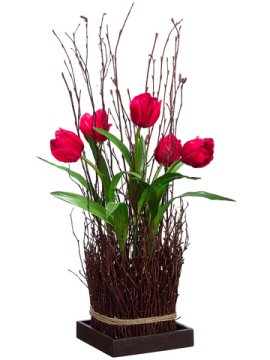
Decorating with tabletop small gifts and home accents is a wonderful way to add personal touches and enhance the aesthetic of your space. Here are some tips to help you decorate with these items:
Determine the theme or style: Decide on the theme or style you want to achieve in your space. It could be minimalist, bohemian, rustic, modern, or any other style that resonates with you. Having a clear theme will help you select tabletop small gifts and home accents that align with your overall vision.
Choose a focal point: Select a focal point in the room where you want to display your tabletop items. It could be a coffee table, console table, shelf, or any other surface that attracts attention. This will serve as a central area for showcasing your decor pieces.
Mix and match: Combine different types of tabletop small gifts and home accents to create an eclectic and visually appealing display. Mix items of varying heights, textures, colors, and materials. This will add depth and interest to the arrangement. Consider incorporating items such as candles, vases, sculptures, picture frames, small plants, decorative trays, or unique collectibles.
Grouping and placement: Arrange your tabletop items in groups or clusters rather than scattering them randomly. Grouping similar items together creates a cohesive and organized look. Play with different arrangements and compositions until you find a configuration that pleases your eye. Place taller or larger items in the back and smaller ones in the front for a layered effect.
Pay attention to scale: Consider the size and scale of your tabletop items in relation to the surface they are placed on. You don't want items that are too small and get lost or oversized pieces that overwhelm the space. Achieve a balanced and proportionate arrangement by varying the sizes of the items.
Incorporate personal touches: Add personal touches by including items that hold sentimental value or reflect your interests and hobbies. These could be small mementos, framed photos, travel souvenirs, or handmade crafts. Personalized items can make your decor feel unique and meaningful.
Create visual balance: Step back and assess the overall arrangement to ensure visual balance. Distribute the items evenly across the surface, considering both their size and visual weight. If one side feels heavier, add or remove items as needed to achieve a harmonious composition.
Refresh and update: Periodically refresh and update your tabletop decor to keep the space feeling fresh and interesting. Swap out items, change the arrangement, or incorporate seasonal elements to reflect the changing seasons or your evolving tastes.
Remember, the key is to have fun and let your creativity guide you when decorating with tabletop small gifts and home accents. Experiment with different combinations until you achieve a look that brings joy and reflects your personal style.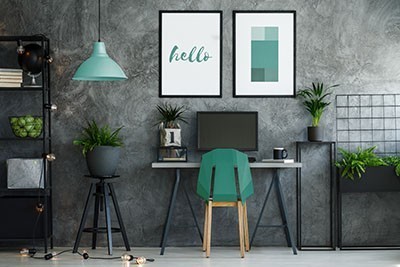
Greenery Garlands, Vines and Bushes. Create a garden of artificial greenery any where and every where in your home or office.
Our fabulous faux greenery garlands, vines and bushes are carefully silk screened and made
to mirror nature at its finest. Invigorate your home or office with a garden variety of silk
that require no watering and just an occasional dusting. No sunlight required! Create your own
hanging baskets by mixing and matching , enhancing the beauty of any or every room in your home or office.
Decorating with small artificial accent plants can bring a touch of greenery and freshness to any space. Here are some tips on how to decorate with small artificial accent plants:
Select the right plants: Choose small artificial accent plants that are realistic in appearance and suit your personal style. Consider plants with varying textures, shades of green, and different types of foliage to create visual interest.
Determine the placement: Decide where you want to place the small artificial accent plants. They can be used to add a pop of greenery to shelves, side tables, countertops, windowsills, or any other surface that needs a decorative touch. Consider areas that could use a visual uplift or where you want to create a focal point.
Choose appropriate containers: Select containers or pots that complement the style of your space and enhance the overall look of the artificial plants. Opt for small pots made of materials like ceramic, terracotta, or glass, depending on the aesthetic you want to achieve. Ensure that the pots are proportionate to the size of the plants.
Create groupings: Arrange the small artificial accent plants in groupings for a cohesive and visually pleasing display. Cluster plants of different sizes, shapes, and heights together to create depth and dimension. You can also combine them with other decorative items like candles, books, or sculptures for an added touch.
Mix and match: Experiment with different types of small artificial plants to create an interesting mix. Combine plants with different leaf shapes, sizes, and heights. This will add variety and make the arrangement look more natural.
Play with levels: Use risers, decorative stands, or shelves of varying heights to create different levels within your arrangement. This adds visual interest and prevents the display from looking flat. Place taller plants or those with trailing foliage at the back, and shorter ones towards the front.
Consider placement and scale: Take into account the scale of your space and the size of the small artificial accent plants. Ensure that the plants are proportionate to the surface they are placed on, and they don't overwhelm the surrounding decor. Additionally, consider the lighting conditions of the area and place the plants accordingly, ensuring they don't block natural light sources.
Maintain and clean: Regularly dust the leaves of your small artificial accent plants to keep them looking fresh and vibrant. Use a soft cloth or feather duster to remove any accumulated dust. Additionally, inspect the plants for any signs of wear or damage, and replace or repair them as needed.
Remember to have fun and experiment with different arrangements and combinations when decorating with small artificial accent plants. They offer a low-maintenance way to introduce greenery into your space while adding a decorative element.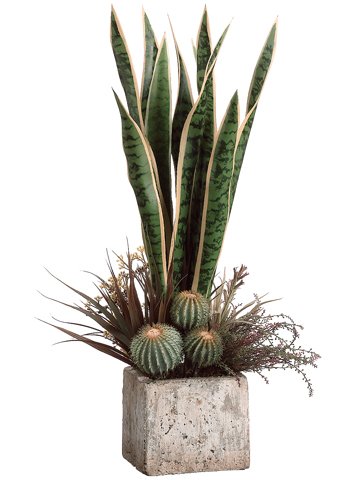
Decorative artificial accent plants can be a fantastic addition to your home decor, offering a touch of greenery and style. Here are some tips on how to decorate with decorative artificial accent plants:
Select the right plants: Choose decorative artificial accent plants that match your desired aesthetic and style. Consider plants with interesting foliage, unique shapes, or vibrant colors that complement your overall decor theme.
Determine the placement: Decide where you want to place the decorative artificial accent plants in your space. They can be used to enhance shelves, mantels, coffee tables, console tables, or any other surface that needs a decorative touch. Think about areas that could benefit from a pop of color or an eye-catching focal point.
Choose suitable containers: Select containers or pots that align with your decor style and enhance the overall look of the artificial plants. Opt for decorative pots made from materials such as ceramic, woven baskets, or metallic finishes to add visual interest. Consider the size of the container in proportion to the plant and the space you're decorating.
Create groupings and arrangements: Arrange the decorative artificial accent plants in visually appealing groupings or arrangements. Combine different sizes, shapes, and varieties of plants to create a dynamic display. Experiment with various compositions until you achieve a balance that is pleasing to the eye.
Incorporate natural elements: To make your decorative artificial accent plants look more realistic, incorporate natural elements around them. Add decorative rocks, pebbles, moss, or faux soil to the base of the plants to mimic a natural environment. This will add authenticity and enhance the overall aesthetic.
Consider heights and levels: Play with the heights and levels of the decorative artificial accent plants to create visual interest. Use plant stands, risers, or stack books to elevate some plants, while keeping others at a lower level. This layering effect adds depth and dimension to your decor.
Mix with other decor elements: Combine your decorative artificial accent plants with other decor elements to create a cohesive look. Incorporate items like candles, vases, decorative trays, artwork, or books that complement the plants and your overall theme. This blending of different elements will add texture and variety to your decor.
Regular maintenance: Even though artificial plants don't require watering or sunlight, they still need occasional maintenance. Dust the leaves regularly using a soft cloth or feather duster to keep them looking fresh. Inspect the plants for any wear or damage and replace or repair as needed.
By following these tips, you can effectively decorate with decorative artificial accent plants and create an inviting and visually appealing space. Enjoy the beauty of greenery and style without the need for ongoing care.
Artificial Jungle Vine Selections-Perfect for zoos museums, theaters, plays, movie productions, scenic productions, wildlife exhibits.
Decorating with tree root (jungle vine) selections can bring a unique and natural touch to your space. Here are some tips on how to decorate with tree root selections:
Choose the right tree root: Select a tree root or jungle vine that suits your decor style and the overall aesthetic you want to achieve. Look for roots or vines with interesting shapes, textures, and colors that will stand out and make a statement in your space. Consider the size and scale of the root or vine based on the available space.
Determine the placement: Decide where you want to place the tree root or jungle vine in your space. These selections can be used as standalone art pieces, table centerpieces, wall hangings, or as part of larger displays. Consider areas where the root or vine can become a focal point or enhance the natural ambiance of the space.
Display options: There are several ways to display tree roots or jungle vines depending on their size and shape:
Standalone centerpiece: Place the root or vine on a stable surface such as a coffee table, console table, or mantel. Ensure it is positioned securely and won't topple over.
Wall hanging: Mount the root or vine on a wall using nails, hooks, or brackets. Consider positioning it in a way that accentuates its natural shape and provides visual interest.
Terrarium or container: Incorporate the tree root or jungle vine into a terrarium or decorative container with other natural elements like rocks, moss, or small artificial plants. This creates a captivating miniature landscape.
Incorporate into larger displays: Combine the tree root or jungle vine with other natural elements, such as driftwood, shells, or dried flowers, to create larger displays or arrangements. This works well for creating a nature-inspired vignette or as part of a themed decor.
Lighting and ambiance: Consider the lighting in the area where you place the tree root or jungle vine. Soft, warm lighting can enhance its natural beauty and create a cozy ambiance. Experiment with different lighting techniques, such as spotlights or string lights, to highlight specific areas or create dramatic shadows.
Maintenance and care: Tree roots or jungle vines are usually dried or treated to ensure durability. However, they may still require occasional maintenance. Clean them regularly by gently dusting or wiping them with a soft cloth to remove any accumulated dirt or dust.
Decorating with tree root or jungle vine selections offers a unique and organic element to your space. Embrace their natural beauty and let them serve as conversation starters and focal points within your decor.
Decorating with artificial cattail selections can bring a touch of nature and a rustic vibe to your space. Here are some tips on how to decorate with artificial cattails:
Select the right artificial cattails: Look for realistic artificial cattail selections that closely resemble the appearance of real cattails. Consider the size, color, and texture of the cattails to ensure they fit your desired aesthetic. You can find artificial cattails made from materials like silk, plastic, or dried grasses.
Determine the placement: Decide where you want to place the artificial cattails. They work well in spaces with a natural or rustic theme. Consider areas where you want to add height, texture, or a nature-inspired focal point. Popular spots include corners, entryways, mantels, or near other natural elements like dried flowers or branches.
Choose suitable containers or vases: Select containers or vases that complement the style and size of the artificial cattails. Choose containers made of natural materials like ceramic, wood, or woven baskets for a rustic feel. Ensure the container is stable and tall enough to hold the cattails securely.
Create arrangements and groupings: Arrange the artificial cattails in groupings or clusters to create visual interest. Consider varying the heights of the cattails within the arrangement for a more natural look. You can also combine them with other natural elements like dried grasses, feathers, or branches to enhance the overall aesthetic.
Consider the color palette: Artificial cattails often have natural brown or tan colors, which can complement various color schemes. Consider the existing colors in your space and choose cattails that harmonize with the overall palette. You can also consider adding accents of colors like green or cream to the arrangement for added visual interest.
Play with different heights and levels: If using multiple artificial cattails, experiment with different heights and levels to create a dynamic arrangement. Trim the stems of the cattails if needed to achieve the desired heights. You can also place them in different-sized containers or use risers to create varied levels within the arrangement.
Enhance with natural elements: To make the artificial cattails look even more realistic, consider incorporating natural elements into the display. Add rocks, pebbles, or sand to the bottom of the container to mimic the natural environment of cattails. You can also include dried moss or faux foliage to create a more natural and textured setting.
Regular maintenance: Artificial cattails require minimal maintenance. Occasionally dust them with a soft cloth or use a feather duster to keep them clean and free from accumulated dust. Inspect the cattails for any signs of wear or damage, and replace or repair them as needed.
By following these tips, you can decorate with artificial cattail selections and bring a natural, rustic touch to your space. Embrace the beauty of these artificial elements while enjoying the low-maintenance and long-lasting nature they offer.


